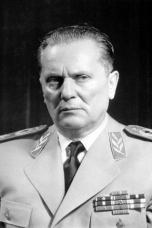
1950 the Staasi was established in East Germany –so play spy games
1960 the Hollywood Walk of Fame has its first six stars added – the above website has loads of ideas for Hollywood movie themed play.

1828 Jules Verne born
Prešeren Day (Slovenia):
The world’s oldest musical instrument was discovered in Slovenia – the Divje Babe flute. Make a flute! – as well as the world’s oldest wooden wheel, preserved in marshes.
The ancient Romans came in and decided Slovenia was part of Italy; later Huns and Germans invaded too. When the last Germanic tribe, the Lombards, moved out, Slavic tribes moved in.
Under King Samo they fought against the horse-riding Avars, and when Samo’s kingdom fell apart the Slavs founded the duchy of Carantania.

Bavarian missionaries came over and together the Bavarians and Slavs became part of the Carolingian Empire, named after Charlemagne/Charles the Great, which was the name for the Frankish Empire which itself was the name for the western half of the Roman Empire, the ‘Holy’ Roman Empire, after it fell. Confusing, right?
A Magyar, or Hungarian, invasion separated the western Slavs from the Slovenes in Carantania.

The Germanic king Otto defeated the Magyars and then Italy to become the new head of the Holy Roman Empire, and Carantania became Carinthia. It was separated from Bavaria and shrank to its present size.
It was owned by the Habsburgs and the counts of Celje/Cilli, but Turks kept raiding and the peasants tried to revolt several times because life was so hard. Between 1880 and 1910 about 1 in 6 Slavs emigrated.
In WWI many Slovenes were conscripted into the Austro-Hungarian army, and many died either fighting or in Italian prisoner-of-war camps.
After WWI the Slovenes banded with the Croats and Serbs as the Austro-Hungarian Empire fell, and became Yugoslavia, in which Slovenia was the most industralised and productive.
In 1920 the southern Slovene-speaking Carinthia became part of Austria, and Italy was given other parts of Slovenia in exchange for joining the UK during WWI (I doubt the UK had the right to hand Slovenia over, but there it is). Slovenes in Italy had their language and culture violently oppressed.

In WWII Yugoslavia was invaded by the Axis Powers (Germany, Hungary, Italy, Japan). One general, Pietro Badoglio, was a particularly huge war criminal who used poison gases on Red Cross hospitals, etc., but only Greece, Yugoslavia and Ethiopia wanted him extradited as America and the UK saw him as an anti-Communist ally in Italy, so he was never extradited.

Yugoslavia and Slovenia became socialist states after WWII under leader Josef Tito, but because Slovenia again was the most productive, it felt like it was carrying the rest of the state and so requested independence.
Yugoslavia, under Slobodam Milosevic, tried to fight them for 10 days but in 1991 Slovenia became an independent, democratic nation. It joined the EU in 2004.
It has the most forests in Europe, including the remains of some primeval ones, because they are so valued that they keep logging to a minimum, and despite its small size contains 1% of the world’s organisms.

This day celebrates Slovenian culture. Try making a Prekmurska gibanica.




























